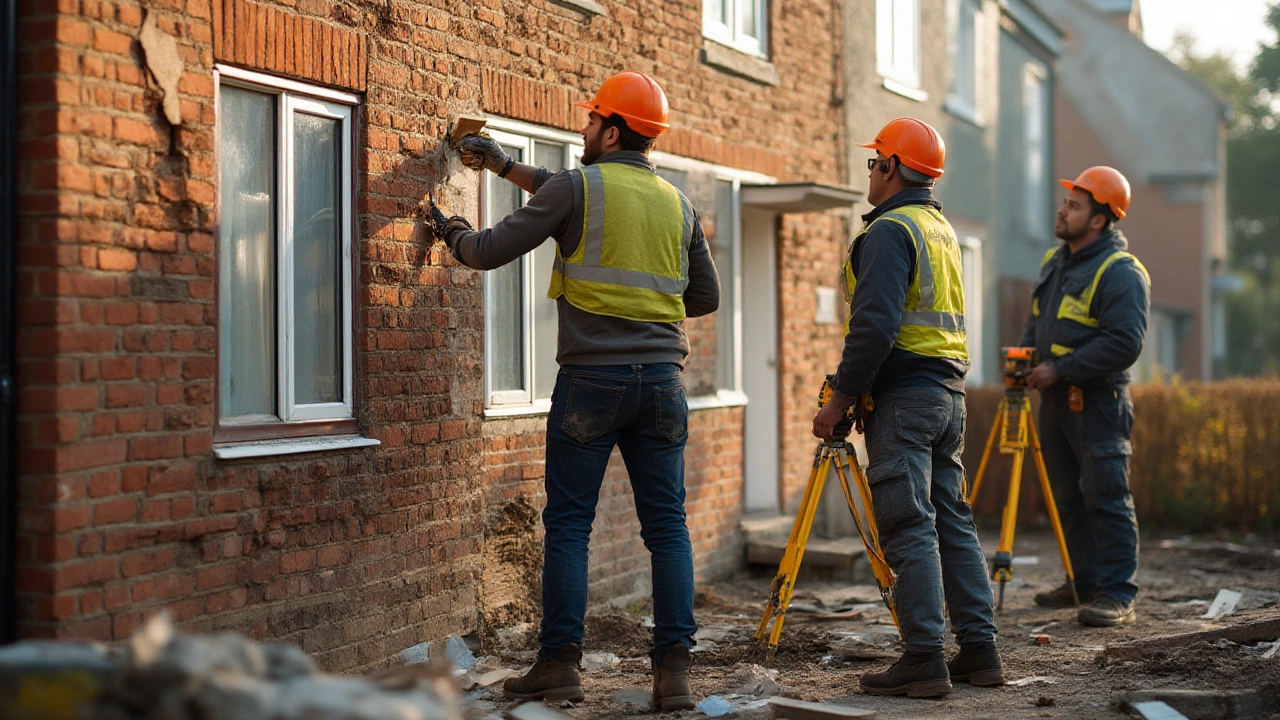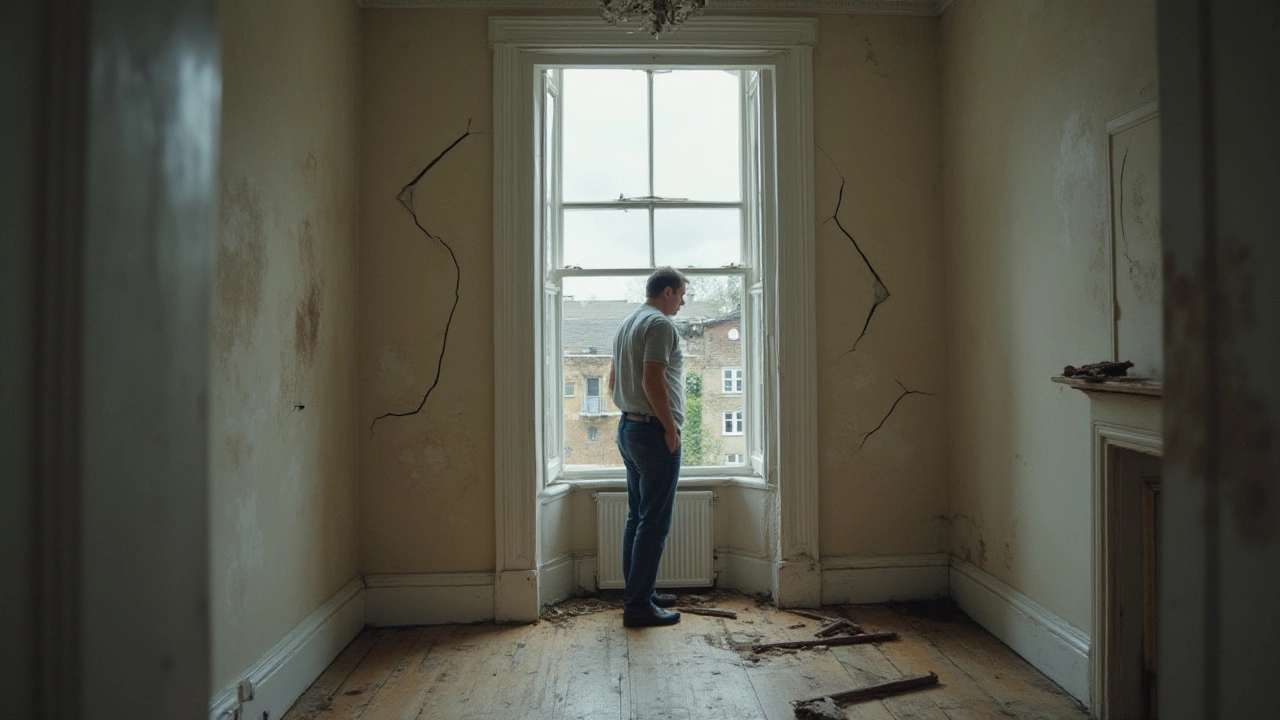Imagine waking up to your bedroom door jamming for weeks. You fix the hinges, adjust the frame, but nothing works. Eventually, you spot a zigzag crack inching across your living room wall. This isn't about old paint or a sticky lock. These are warnings your home’s foundation might be in trouble, and not just a little. We're talking about issues that threaten the entire structure—problems that, left unchecked, can gut your finances and sanity. But what exactly transforms a minor foundation problem into a 'major' one? It’s not always dramatic sinking or a basement that looks like a swimming pool. Sometimes, it’s subtle—a slow, silent shift that creeps into your daily life.
What Defines a Major Foundation Issue?
Not all cracks are created equal. Those tiny surface lines on a garage floor often mean little, but if you see wide, jagged cracks stretching across load-bearing walls or the base of your house, you’ve moved into 'major' territory. Foundation experts define a major foundation issue by the degree of movement and the speed it happens. For instance, according to the American Society of Civil Engineers (ASCE), cracks wider than a quarter-inch, doors and windows that no longer fit properly, and visible shifting of walls are all red flags. If you spot separations between walls and the ceiling, or notice uneven floors you could practically roll a marble down, take it seriously.
Here’s something most folks don’t realize: a little settling is normal in almost any house, especially in the first few years. Soil compacts, the structure relaxes, and some fine lines appear. But when you see cracks getting larger fast, or when one part of the house is lower than the rest (we call that differential settlement), you might be dealing with a failing foundation. Severe issues can even lead to walls bowing inward, plumbing leaks, or gaps around exterior doors and windows. In short, if the foundation can’t do its main job—support your home evenly—things quickly spiral.
Check out these telltale signs that move a problem from cosmetic to catastrophic:
- Step-shaped or diagonal cracks in brick or block foundations
- Basement walls that bulge or cave inward
- Floors sloping more than an inch over 10 feet
- Cracks that appear and widen after storms or in dry spells
- Mold, musty odors, or obvious water intrusion
The Insurance Information Institute publishes annual figures showing foundation claims are among the most expensive for homeowners—averaging from $4,000 up to $50,000 when serious structural work is needed. That’s why catching and understanding symptoms quickly is a big deal. The longer a major problem is ignored, the bigger the fix—sometimes requiring the house to be raised and shored using hydraulic piers.
Common Causes and Why They Matter
You might wonder, why is this happening to my house? Soil movement is the leading culprit. Expansive clay soils, which are common in states like Texas and Colorado, soak up water and swell, then shrink dramatically in drought. That push-pull under your house can torque foundations until they crack or split open. According to the U.S. Geological Survey, over half of U.S homes are built on clay-rich soils, which puts millions at ongoing risk every year.
Weather swings, from flash floods to long dry spells, only make things worse. Tree roots growing too close to the slab can suck out moisture and cause uneven settling. Sometimes, burst plumbing or poorly directed gutters set off miniature landslides right underneath your foundation. Even construction shortcuts—like skipping soil compaction or using subpar concrete—spell future trouble. In fact, a 2018 survey from the National Association of Home Builders found that inadequate drainage was the top cause of foundation-related claims among new homeowners.
Gravity always wins, and your foundation is fighting a losing battle if it’s not built to match your land and the weight above it. Any major shift in the ground load—like adding a second story or a heavy stone patio—ramps up the risk. Combine that with naturally shifting soil, and even well-constructed homes aren’t immune. That’s also why new homes are surprisingly prone to foundation glitches if corners are cut during design or building.

Major Versus Minor Foundation Problems: How to Tell the Difference
Distinguishing between 'fix it now' and 'watch and wait' is tricky. A small hairline crack that doesn’t widen over time is usually harmless. Cosmetic issues rarely affect the structural parts of a home. But cracks wider than a pencil, ones that offset vertically (where one end is higher than the other), or those showing signs of water seepage can mean the foundation itself is shifting.
It pays to track your home like a detective. Mark cracks with tape and jot the date. If they grow, time to call for help. Uneven, sagging floors? Place a marble near the wall and see if it rolls steadily to the other side. If doors and windows drag or don’t latch, check the frames for separation from the walls. One major indicator often overlooked is a persistent musty smell—the kind you get when water seeps into places it shouldn’t. That’s not just annoying; it can signal that moisture is entering through foundation breaks.
Major foundation issue repairs often require structural engineers or licensed contractors. They’ll inspect, measure with laser levels, and sometimes even dig small holes to see exactly what’s happening under your house. Sometimes, a simple fix like gutter extensions or adding soil grading around the house can stave off bigger issues, but real movement means anchor piers, wall braces, or underpinning is on the table.
Here’s a quick cheat sheet to tell minor from major:
| Issue | Minor | Major |
|---|---|---|
| Cracks | Hairline, not growing | Over 1/4 inch, widening |
| Doors/Windows | Occasional sticking | Won't close at all |
| Floors | Slight unevenness | Noticeable slope/bounce |
| Moisture | None, or after big storms only | Constant damp, mold |
When in doubt, listen to the pros. As one structural engineer, Michael McKinley, put it:
"It’s not just the size of a crack. If the problem keeps coming back after repairs or worsens after rain, you’re likely dealing with more than surface trouble—and waiting only invites higher bills."
Repair Approaches and Tips to Protect Your Home
So, you think you have a major foundation issue? It sounds scary, but modern repair options are way less disruptive than they used to be. Permanent fixes usually require stabilizing the structure with steel piers or pilings driven deep into solid ground. Sometimes, contractors inject polyurethane foam to lift and level sagging sections. For bulging basement walls, carbon fiber straps or braces get installed right over the trouble spots. The process can stretch from a day to a few weeks, depending on the fix.
Here are some smart moves if you suspect a big problem brewing:
- Document everything: Take photos of all cracks, and note when they change.
- Keep gutters free of debris and extend downspouts at least 6 feet from the house.
- Make sure the soil slopes away from the foundation at a minimum of 6 inches over the first 10 feet.
- Don’t plant trees closer than their mature height to your house (a 30-foot tree needs at least 30 feet of space).
- If you’re buying a home, always get an independent foundation inspection.
Foundation repairs carry weight with insurance companies and future buyers. Some policies cover sudden issues—like burst pipes damaging a foundation—but most exclude gradual settling or pre-existing defects. Before hiring anyone for a fix, check licensing and reviews. A trustworthy contractor should provide a written assessment, offer a warranty, and explain every step.
Standard solutions and costs (as of 2024) look something like this:
| Repair Method | Typical Cost | Use-Case |
|---|---|---|
| Pier & Beam Underpinning | $3,500–$10,000+ | Leveling sinking or settling homes |
| Slab Jacking (Foam Injection) | $2,000–$8,000 | Lift sunken slabs/sections |
| Wall Anchor Systems | $2,000–$6,000 | Stabilize bowing/bulging walls |
| Drainage Correction | $1,000–$5,000 | Fix water intrusion, prevent future shifting |
Remember: no foundation fix will work if water control gets ignored. The National Concrete Masonry Association reports over 60% of foundation repairs could have been avoided with good drainage alone. Every dollar spent on proper grading and gutters is a wise investment against major foundation trouble. If you're debating when to call for help, sooner is better—quick action could save you tens of thousands and keep your house safe for years.
